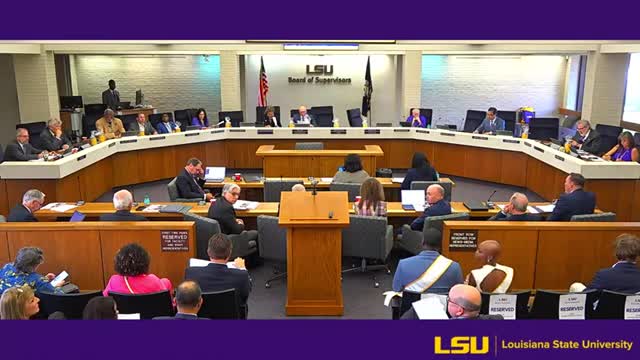LSU hurricane climatologist: Louisiana remains 'ground zero' for tropical cyclones; university research and response highlighted
October 22, 2025 | Board of Supervisors of Louisiana State University and Agricultural and Mechanical College Board of Supervisors of Louisiana State University and Agricultural and Mechanical College, Boards & Commissions, Organizations, Executive, Louisiana
This article was created by AI summarizing key points discussed. AI makes mistakes, so for full details and context, please refer to the video of the full meeting. Please report any errors so we can fix them. Report an error »

Trepanier said storm surge is the single most catastrophic feature of tropical cyclones in the state and described how surge and levee failures produced widespread inundation during Hurricane Katrina. She told supervisors the state has lost roughly 250 square kilometers of land in about 20 years and emphasized the protective role of wetlands and marshes in absorbing surge energy.
The professor highlighted LSU's scientific and operational contributions to hurricane preparedness and response. She described university-developed tools and efforts including the ADCIRC mesh model and a coastal emergency risk assessment tool, and noted campus examples of surge response and adaptation: converting the PMAC into a temporary hospital, using track-and-field facilities as medical transport hubs, and ongoing collaborations with centers such as the LSU Center for River Studies and Louisiana Sea Grant.
Trepanier summarized research efforts at LSU that combine modeling and outreach: faculty and students building surge and frequency models, cross-campus centers advancing resilience science, and partnerships with state agencies such as the Coastal Protection and Restoration Authority. She framed these efforts as part of LSU's role in both immediate disaster response and longer-term coastal resilience.
Committee members asked no substantive follow-up questions during the allotted time. The presentation concluded with thanks from the committee chair and no formal committee action was required.
The briefing took place on the 20th anniversary observance of Hurricane Katrina and was presented as part of the Research and Agriculture Extension Committee's agenda.
View full meeting
This article is based on a recent meeting—watch the full video and explore the complete transcript for deeper insights into the discussion.
View full meeting
